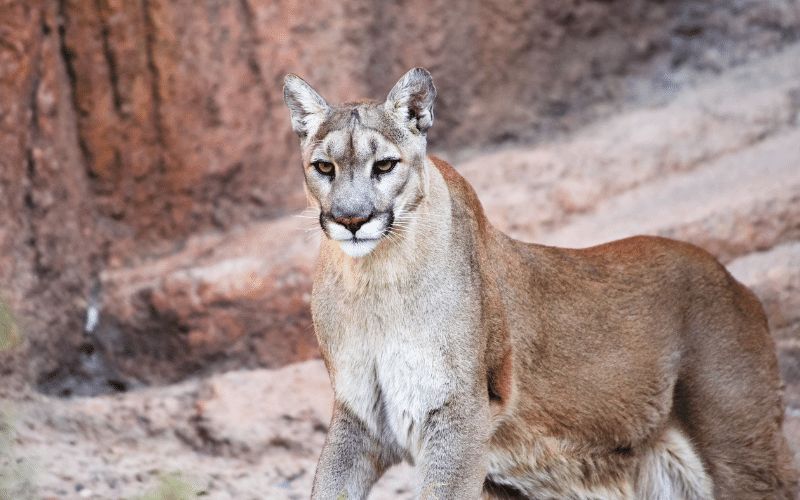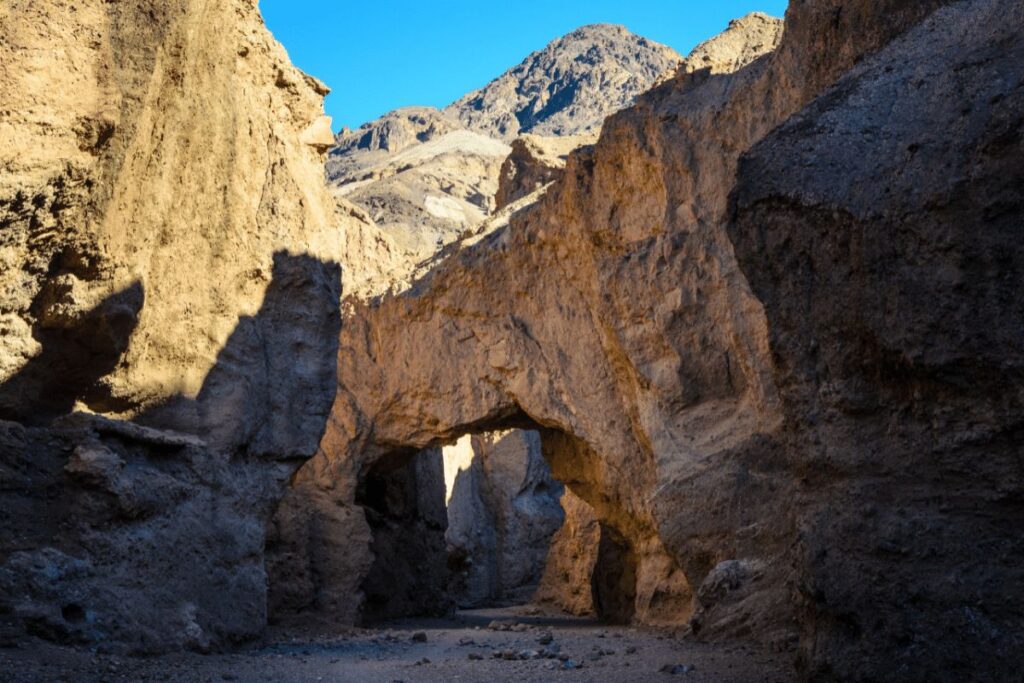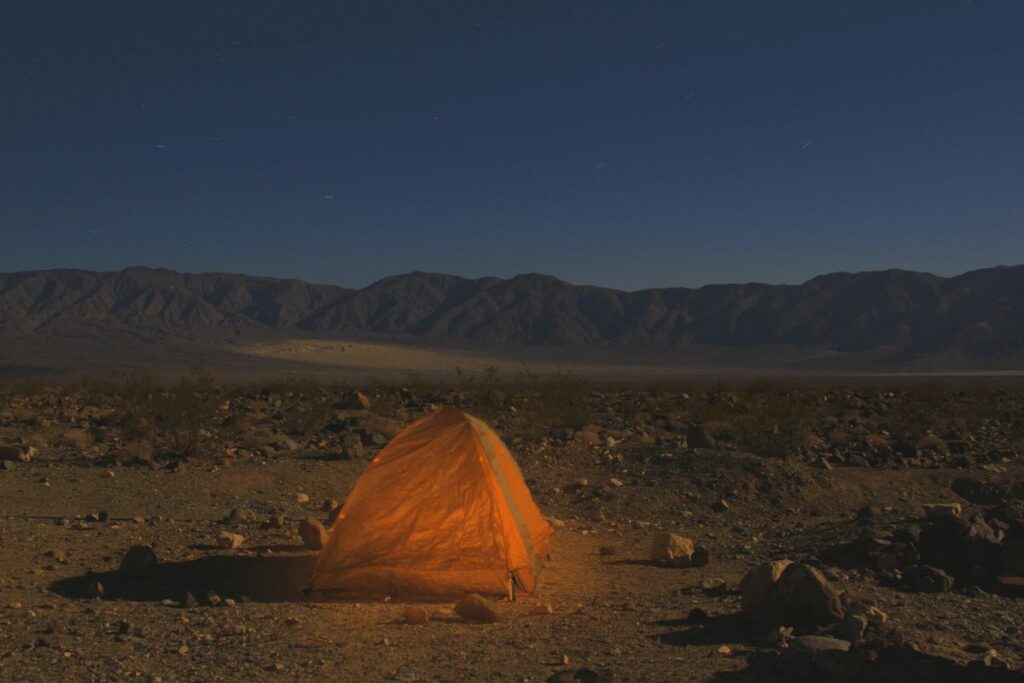Discover the incredible Death Valley Animals with our hiking adventure guide! Encounter rare wildlife and learn survival secrets. Dive in now!
Think Death Valley is just about sun-scorched sands? Think again! Beneath its fiery facade, Death Valley teems with life in the most unexpected ways.
We took a memorable hike across this desert wonderland and were amazed by the array of animals that have mastered the art of desert survival. From the incredibly rare Devils Hole Pupfish to the nimble-footed kit fox, Death Valley’s fauna is as diverse as it is surprising.
Dive into our photo-filled article and journey with us to meet these desert denizens that defy the odds every day. Ready to meet Death Valley’s fierce and feathery residents? Let’s go on a wild desert safari!
Animals We Encountered in Death Valley
We were fortunate to encounter several fascinating Death Valley animals on our hikes, including bighorn sheep, kit foxes, and black-tailed jackrabbits.
To give you a better idea of what to expect when exploring Death Valley, we’ve compiled a list of animals you might encounter during your visit.
Mountain Lions
In the Death Valley National Park, we saw many different kinds of animals. One of the most exciting was the mountain lion!
Mountain lions are an apex predator in North America, meaning they’re at the top of the food chain. They’re also one of the biggest cats in the world, and can weigh up to 200 pounds!
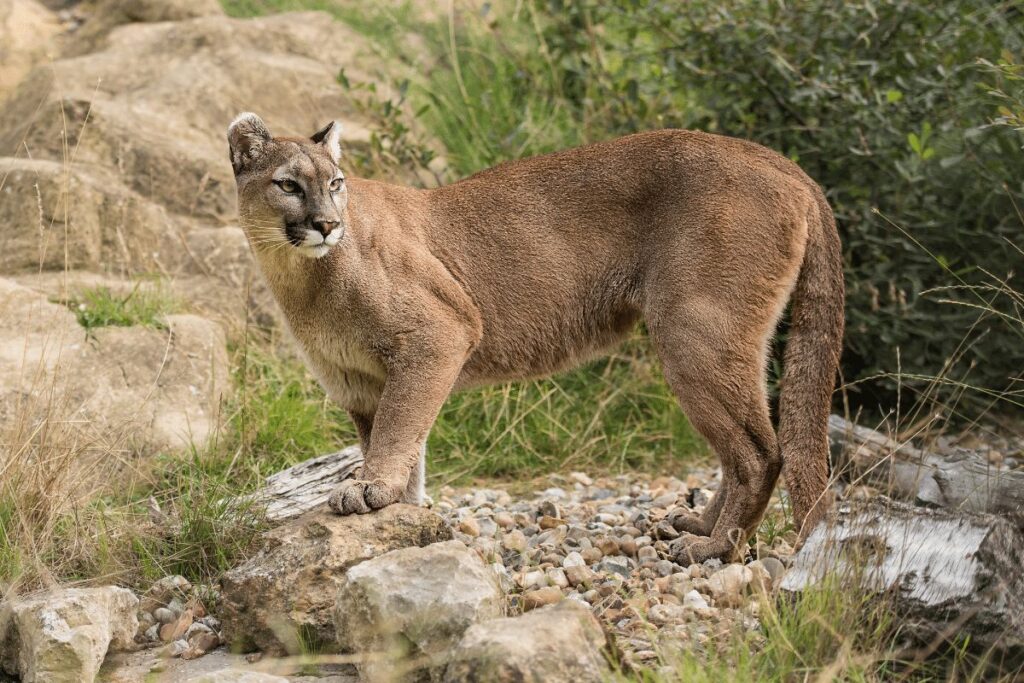
We were lucky enough to see a mountain lion while we were hiking. It was a beautiful animal, and we watched it for a long time before it disappeared into the bushes.
Mountain lions are endangered, so it was amazing to see one in person. If you’re ever lucky enough to see one, be sure to give it plenty of space and admire it from afar.
Roadrunners
We saw several roadrunners while hiking in the Death Valley National Park, and they were always a welcome sight.
Roadrunners are small birds, with a long tail and a body that is mostly brown. Their legs are strong and their wings are short, allowing them to run quickly over the desert sand. They can reach speeds up to 20 mph while running on the ground!
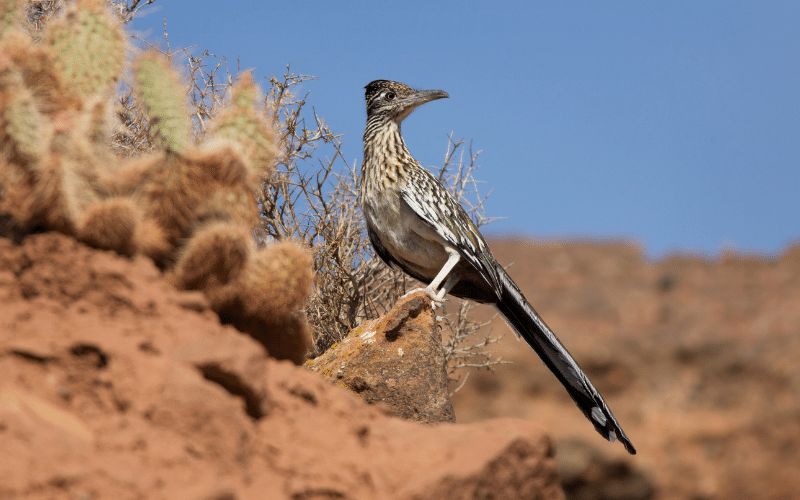
Roadrunners have keen eyesight and can spot prey from a long distance away. They also have sharp claws which they use to grab food like lizards, insects, snakes, and small rodents. In addition, they eat berries, seeds and cactus fruits.
In addition to providing entertainment with their comic movements, roadrunners also help control pests in the desert. By eating rodents they help reduce crop damage in agricultural areas, while preying on snakes helps keep other animals safe from venomous species like rattlesnakes.
Bobcats
The Death Valley National Park is home to a variety of different animals, including bobcats! These elusive creatures are rarely seen by humans, but we were lucky enough to spot one while we were hiking.
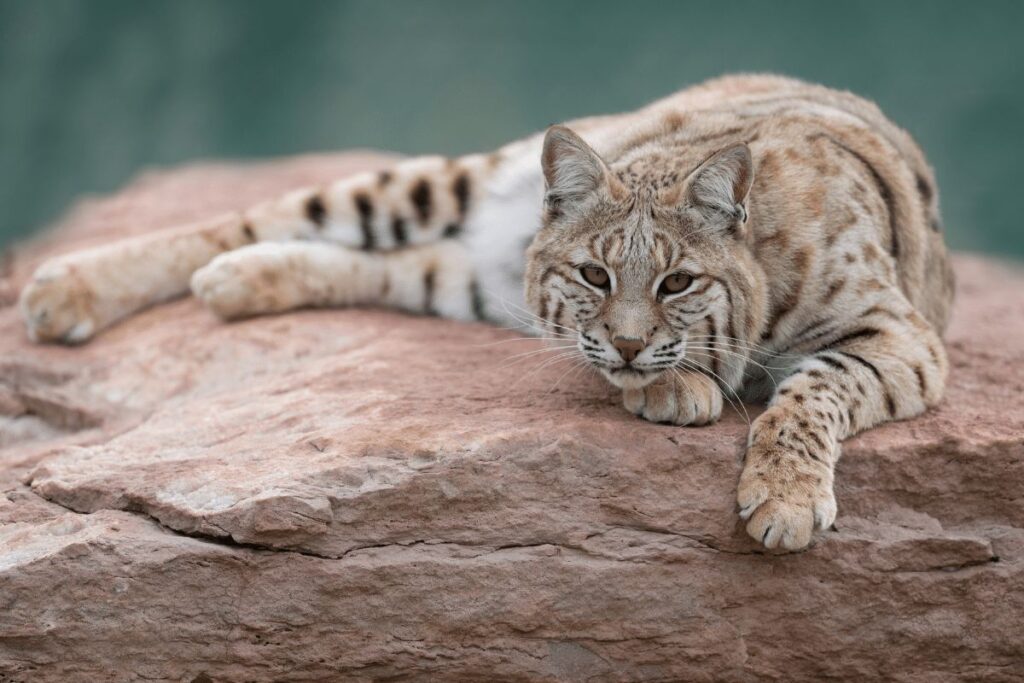
Bobcats are medium-sized cats that can be found throughout North America. They have short fur that is usually brown or grey in color, with black spots on their sides and legs.
Their tail is black-tipped, and they have a white patch of fur on their chest. Bobcats are excellent hunters and can take down prey much larger than themselves.
In the wild, bobcats typically live around 10 years, but in captivity, they can live up to 20 years old. These fascinating creatures are just one of the many amazing animals that call the Death Valley National Park home.
Burros
There are an estimated 600-900 wild burros living in the Death Valley National Park. These animals were brought to the area by miners and ranchers in the 1800s and early 1900s, and they have been living in the park ever since.
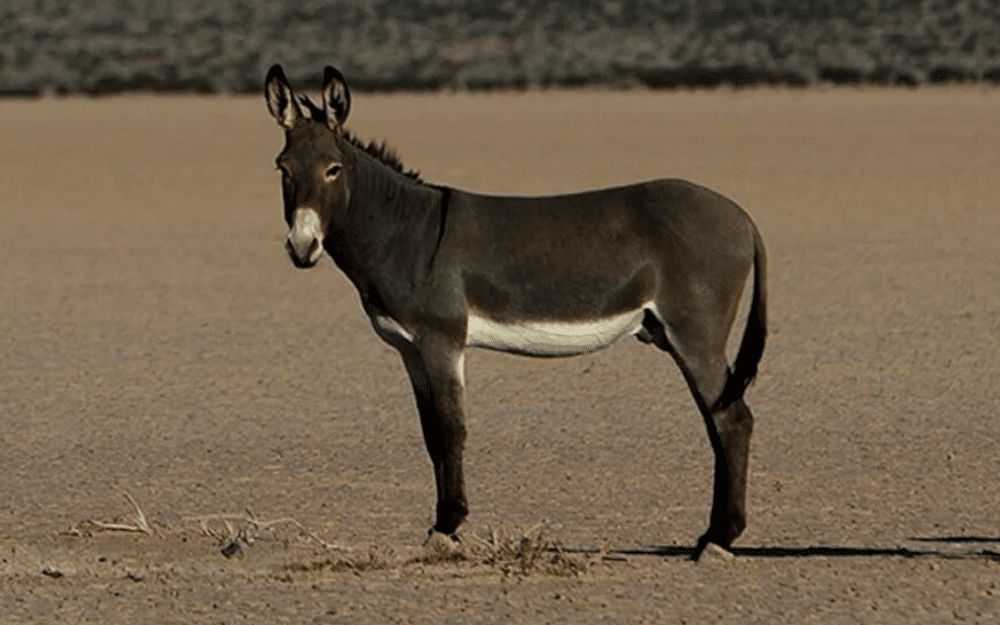
The burros are a big part of the Death Valley ecosystem, and they play an important role in the food chain.
They eat plants that other animals don’t want to eat, which helps to keep those plants from taking over the landscape. And, when they die, their bodies provide food for scavengers like vultures and coyotes.
If you’re lucky enough to see a burro while you’re hiking in the park, please remember that these are wild animals and they should not be approached or fed. Also, please refrain from leaving any trash behind – it’s not good for the burros or for the environment.
Loggerhead shrikes
Loggerhead shrikes are nicknamed “Butcher Birds” for their interesting hunting habits. These birds are the only member of the falcon family that hunts by flying low to the ground and grabbing prey with their talons.
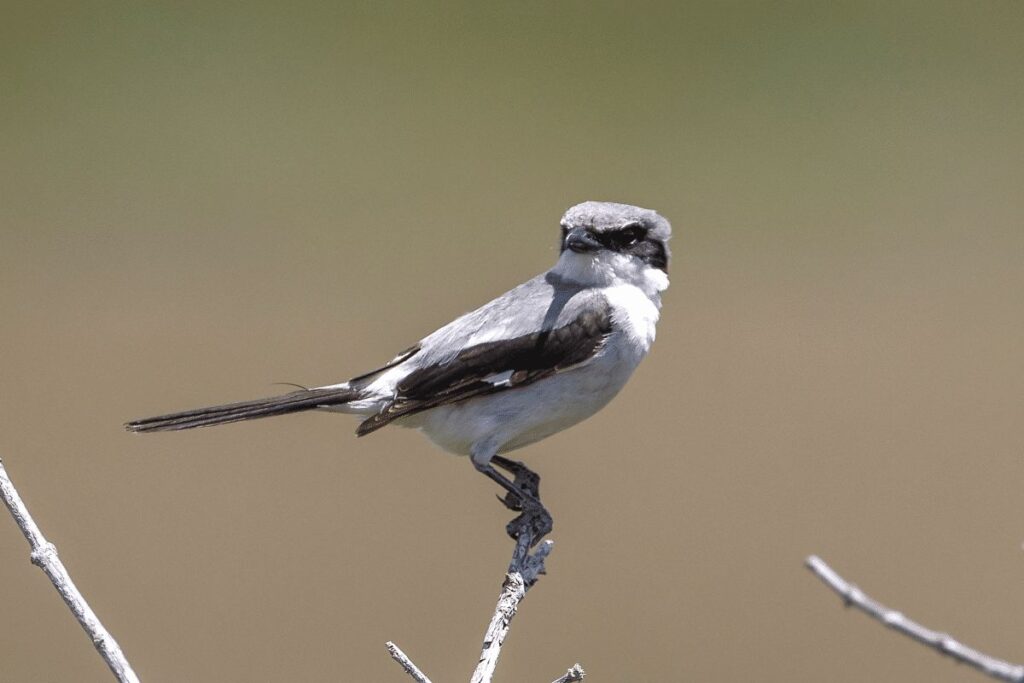
Loggerhead shrikes are known for their unique hunting technique and sharp beaks. They use their beak to impale prey on thorns or barbed wire, making them easier to consume. They also have an interesting vocalization that is described as a “shrieking whistle”.
The birds are native to North America, where they live in open grasslands and shrubland habitats. They feed mainly on insects, small reptiles, amphibians, and other small mammals such as mice and voles.
Loggerhead shrikes are solitary birds, although they will form flocks of up to twenty individuals when migrating or wintering in certain parts of the continent.
Coyote
Coyotes are found throughout the Death Valley National Park, but are most commonly seen in the mornings and evenings. They are shy but curious animals, and will often approach hikers in search of food.
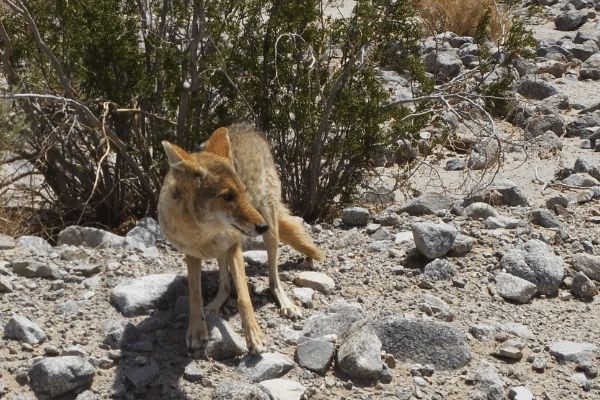
While they may look cute, it is important to remember that coyotes are wild animals and should not be approached. If you see a coyote while hiking, make yourself as big and loud as possible to scare it off.
Coyotes in the area primarily feed on small mammals such as mice, rabbits, and lizards. They also eat fruits, vegetables, carrion, and insects. Coyotes are a keystone species in Death Valley National Park as they help to keep the population of smaller animals in check. They also help disperse seeds from the plants they eat.
Gray Fox
The gray fox is the only member of the canid family that lives in the Death Valley National Park. They are small (usually weighing between 2 and 4 pounds) and have a bushy tail and a long snout.
They are mostly gray in color but may also be reddish-brown, black, or even silver. Gray foxes prefer to stay close to the ground and they can climb trees and fences with their strong claws.
They feed on small animals such as rodents, birds, insects, and reptiles. They are nocturnal hunters and like to hide in rocky terrain during the day.
Meadowlarks
The Western Meadowlark (Sturnella neglecta) is a medium-sized icterid bird, about 8.5 in (22 cm) long. It nests on the ground in open country in western and central North America grassland.
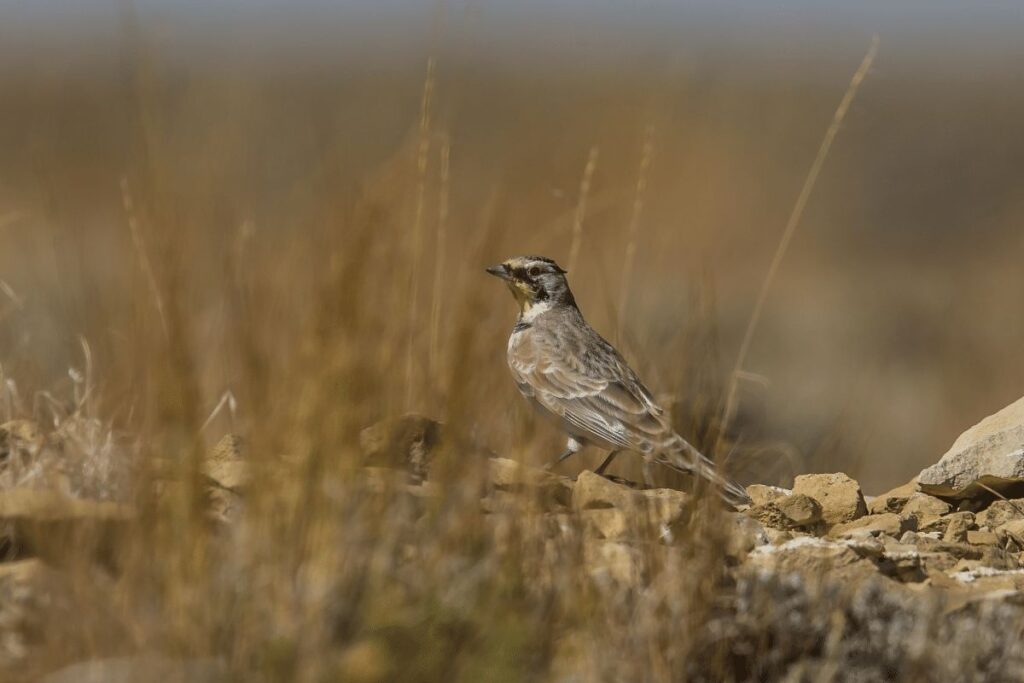
The Western Meadowlark is a species of bird that is found in the Death Valley National Park. The Western Meadowlark is a common bird in the Eastern United States and it ranges from Canada to Mexico.
This bird is a migratory species and can be seen in both the winter and summer months. The Western Meadowlark has a very notable song, which is a mix of clear whistles and trills that can carry for long distances. During courtship, the male will sing from an exposed perch to attract a mate.
The Western Meadowlark feeds primarily on insects, but will also consume small amounts of seeds and berries. It prefers open fields with short grasses, pastures, meadows, and agricultural land.
Mule Deer
The Death Valley National Park is home to a variety of animals, including the mule deer. The mule deer is a popular animal in the park and can be seen in a variety of locations. The deer are often seen in groups, but can also be found alone or in pairs.
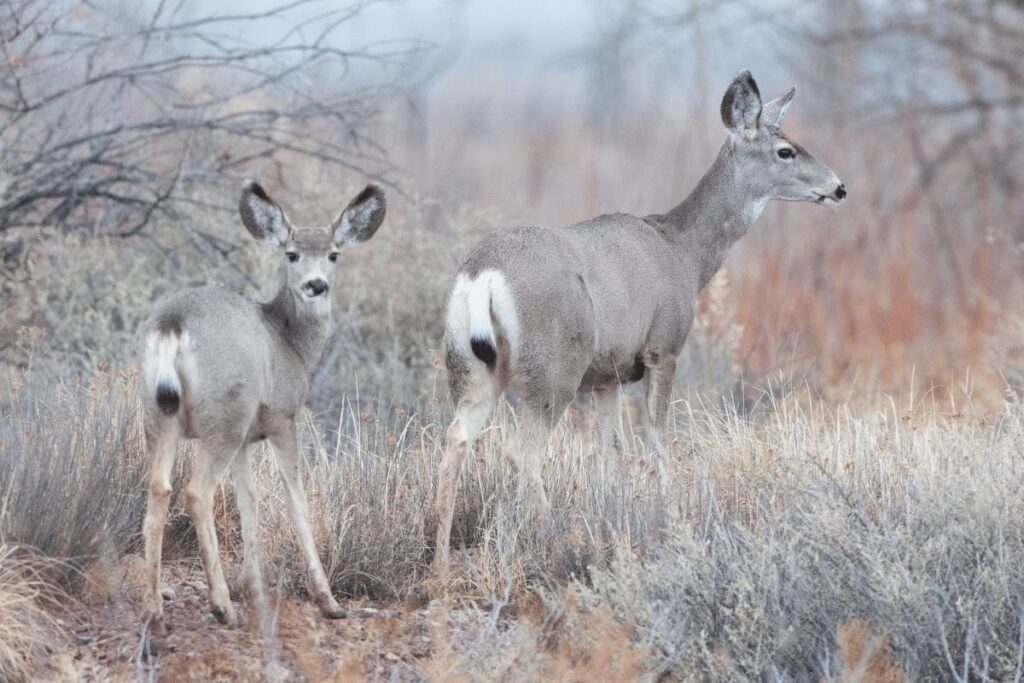
The mule deer is a herbivore and feeds on a variety of plants. The deer are also known to eat insects and other small animals.
The mule deer can be seen throughout the year, but is most active in the early morning and late evening when they feed. During the summer months, mule deer will move to higher elevations and during the winter, they will move back down to lower elevations.
The mule deer is an important part of the park’s ecosystem and provides food for predators such as mountain lions, coyotes, and bobcats.
Desert Bighorn Sheep
The Death Valley National Park is home to a variety of different animals, including the desert bighorn sheep. These sheep are well adapted to the harsh conditions of the desert, and can be seen roaming around the mountains and valleys of the park.
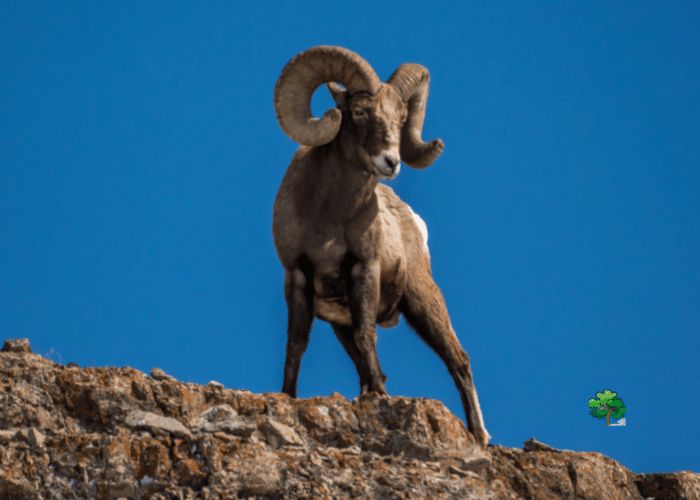
The desert bighorn sheep are a fascinating species, and visitors to the park can learn more about them by taking a ranger-led hike or attending one of the ranger-led programs.
Sidewinder Rattlesnake
One of the most dangerous animals in the Death Valley National Park is the sidewinder rattlesnake. This venomous snake is responsible for many deaths each year, and is a serious threat to hikers and campers alike. The best way to avoid being bitten by a sidewinder is to be aware of their habitat and to avoid walking in areas where they are known to live.
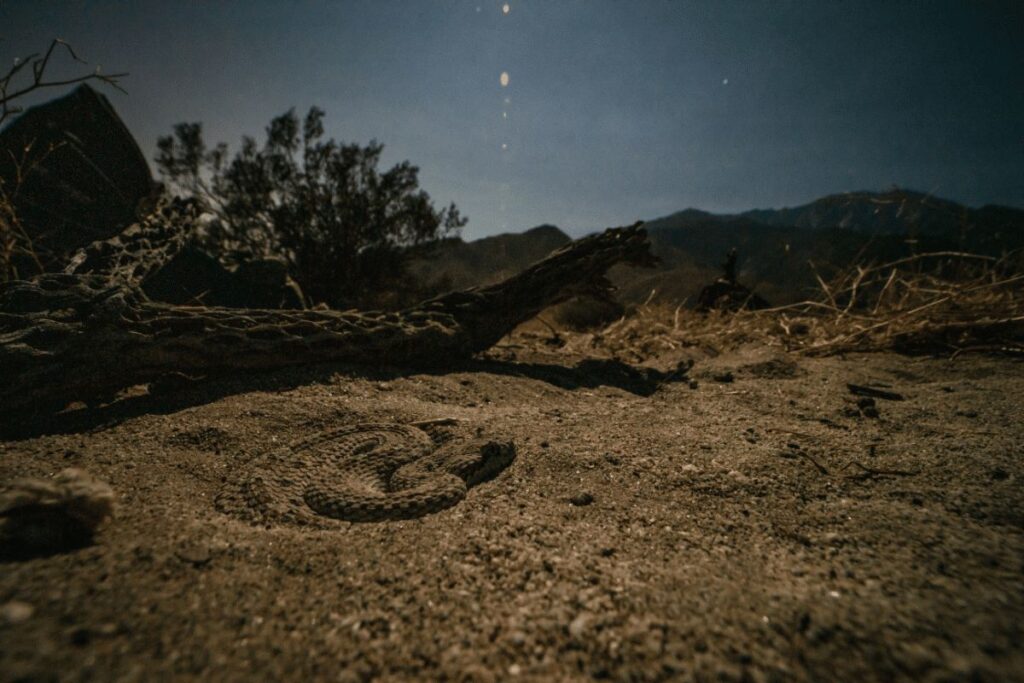
If you do encounter a sidewinder, it is important to remain calm and avoid making any sudden movements, as this may trigger an attack. If you are bitten by a sidewinder, seek medical help immediately and do not attempt to remove the venom yourself.
Also Read: Camping In Death Valley National Park: Your Complete Guide (Sites And Rules Included)
Jackrabbits
There are several different species of jackrabbits in the Death Valley National Park, including the black-tailed, white-tailed, and antelope jackrabbits.
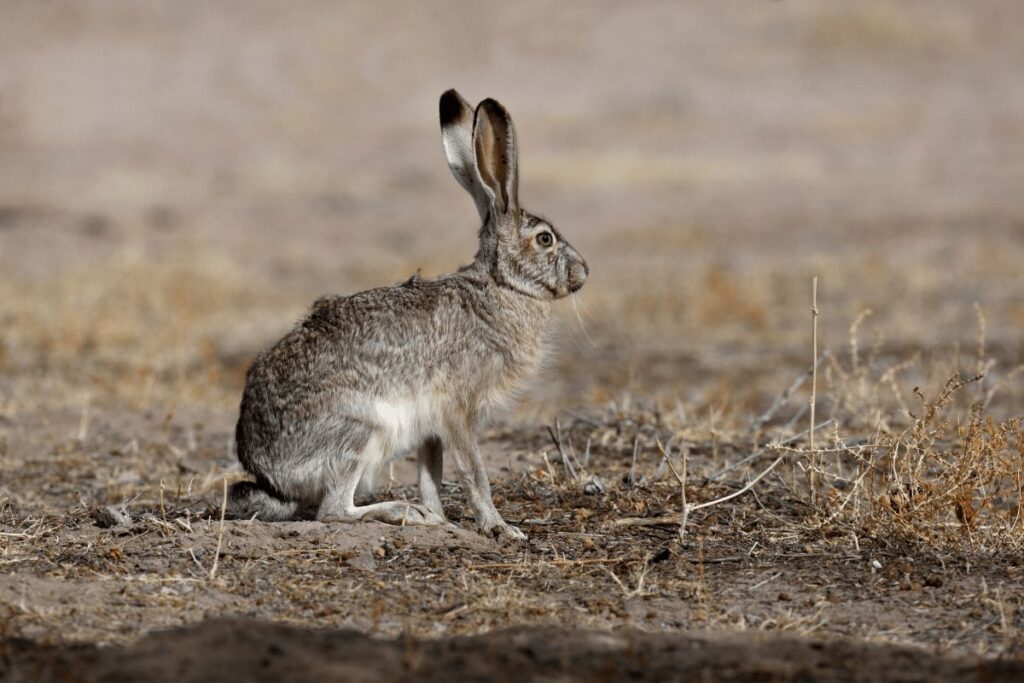
These rabbits are all generally shy and elusive but can be seen running around in the open areas of the park. They are a welcome sight after a long day of hiking in the hot sun!
Jackrabbits are a keystone species in the Death Valley ecosystem, as they are a food source for many predators and scavengers. They also help keep vegetation under control by eating grasses and other plants.
Jackrabbits are important to the health of the desert, so it is important to be mindful of their presence while exploring the park.
Kangaroo rats
There are several species of kangaroo rat in the Death Valley National Park, and they are all interesting animals. The most common species is the black-tailed kangaroo rat, which is a small rodent that gets its name from its long tail and powerful hind legs.
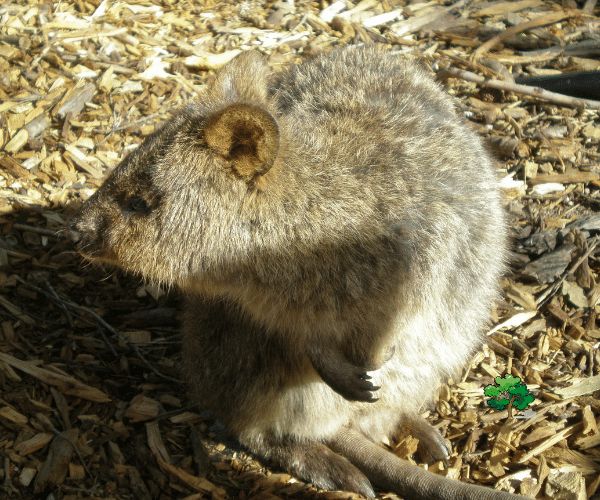
These rats are nocturnal, meaning they are active at night and sleep during the day. They live in burrows underground and come out to forage for food.
Kangaroo rats are herbivores, which means they only eat plants. Their diet consists mostly of seeds, but they will also eat leaves, stems, and fruit when it is available.
They have large cheek pouches that they use to store food to take back to their burrows. Kangaroo rats get all the water they need from the food they eat and do not need to drink water like other animals do.
The other species of kangaroo rat in Death Valley National Park is the desert kangaroo rat. This species is larger than the black-tailed kangaroo rat and has a white stripe down its back.
Desert kangaroo rats are also nocturnal and live in burrows, but their diet consists mostly of green plants rather than seeds. They get moisture from the plants they eat and do not need to drink water either.
Our Encounter With Death Valley’s Endangered Devils Hole Pupfish
During our hike in Death Valley National Park, we were fortunate to experience a truly unforgettable moment: coming face to face with the endangered Devils Hole Pupfish.
This extraordinary encounter took place at Devils Hole, a unique geothermal pool situated within the park. The sun was shining brightly overhead as we approached the pool, its azure waters shimmering enticingly.
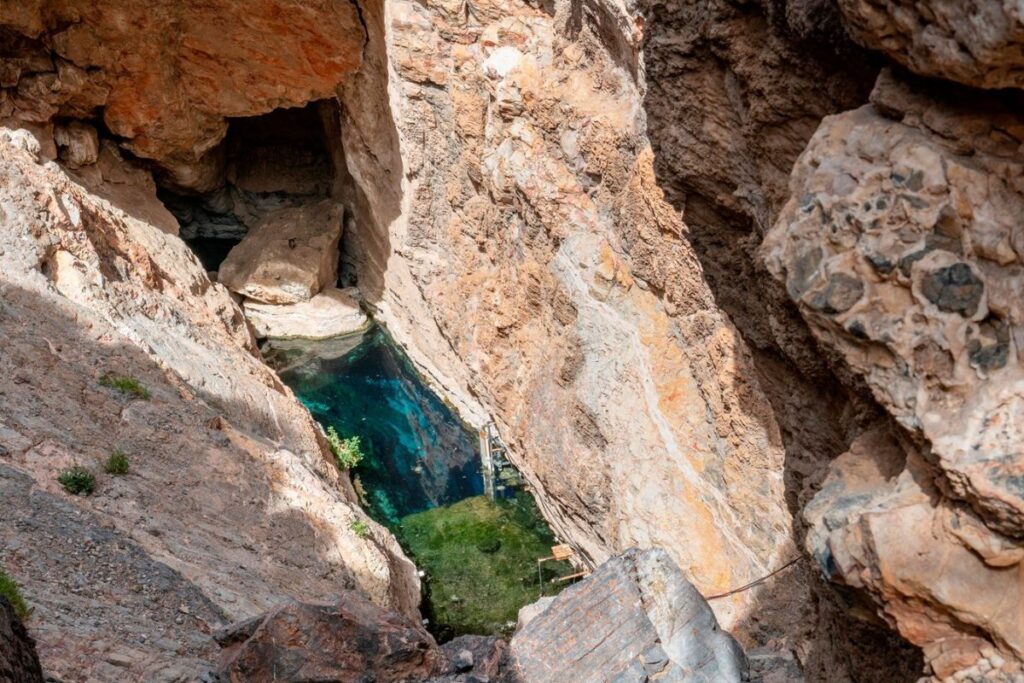
As we peered into the crystal-clear waters, we were amazed to see the tiny, iridescent blue Devils Hole Pupfish swimming gracefully in their natural habitat.
Each fish was no larger than an inch (2.5 cm), yet they exuded an air of resilience and determination, having adapted to the extreme environment of their home. We observed these rare creatures with a sense of awe and reverence, knowing that we were witnessing the lives of the rarest fish in the world.
The Devils Hole Pupfish have evolved to thrive in water temperatures of up to 93°F (34°C) and dissolved oxygen levels that are lethal to most other fish species.
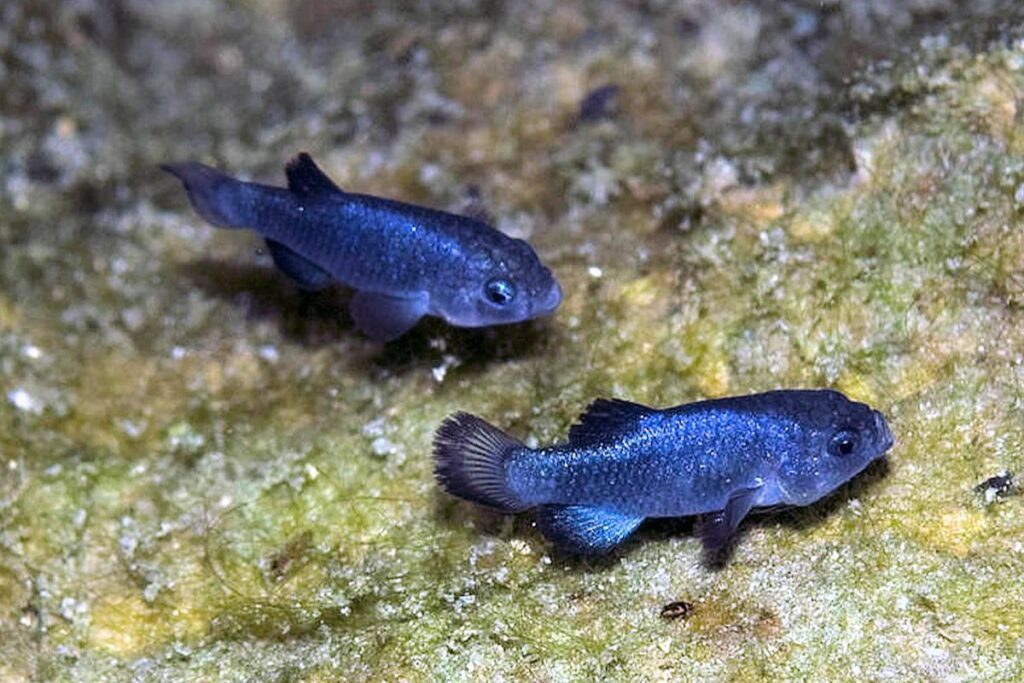
As they swam, we could see them darting around the underwater limestone ledges, feeding on algae and microscopic organisms. The sight of these tiny fish thriving in such an inhospitable environment was truly inspiring.
Our encounter with the Devils Hole Pupfish was a poignant reminder of the fragility and resilience of life in the harsh desert landscape of Death Valley. It underscored the importance of preserving these unique ecosystems for future generations to appreciate and learn from.
More Death Valley Animals to Spot While Hiking
Desert Tortoise
The Desert Tortoise is a slow-moving reptile that can live up to 80 years. They spend much of their time in underground burrows to escape the extreme desert heat.
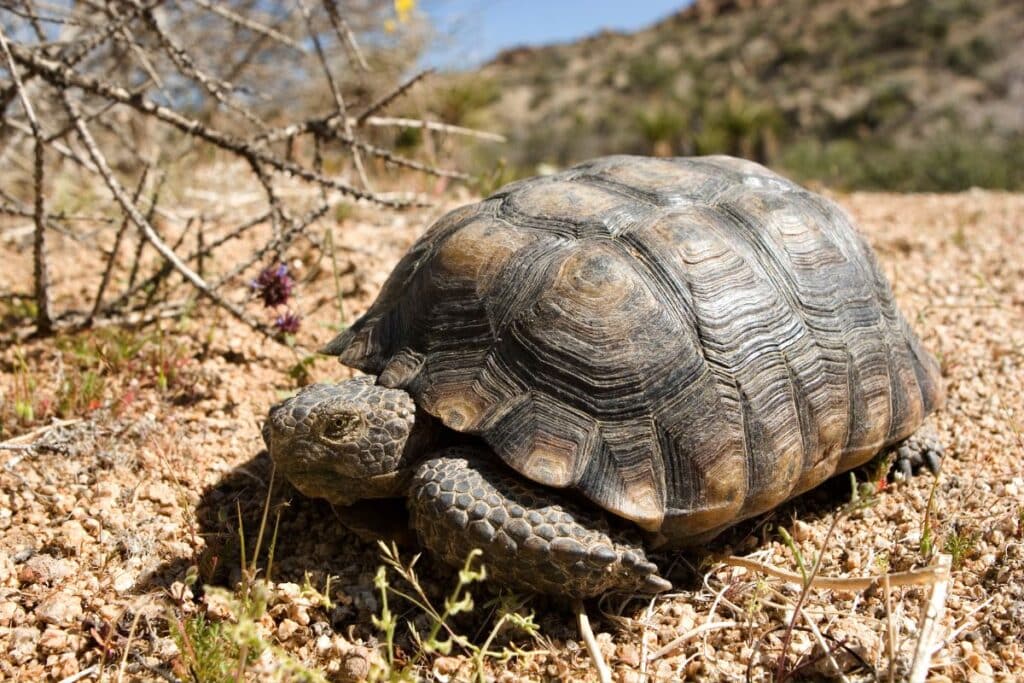
In Death Valley, these tortoises can be found in the park’s foothills and at higher elevations. If you’re lucky, you might spot one during the cooler months, when they are more likely to be active above ground.
Bighorn Sheep
Majestic and agile, Bighorn Sheep are often seen on the rocky slopes and cliffs of Death Valley.
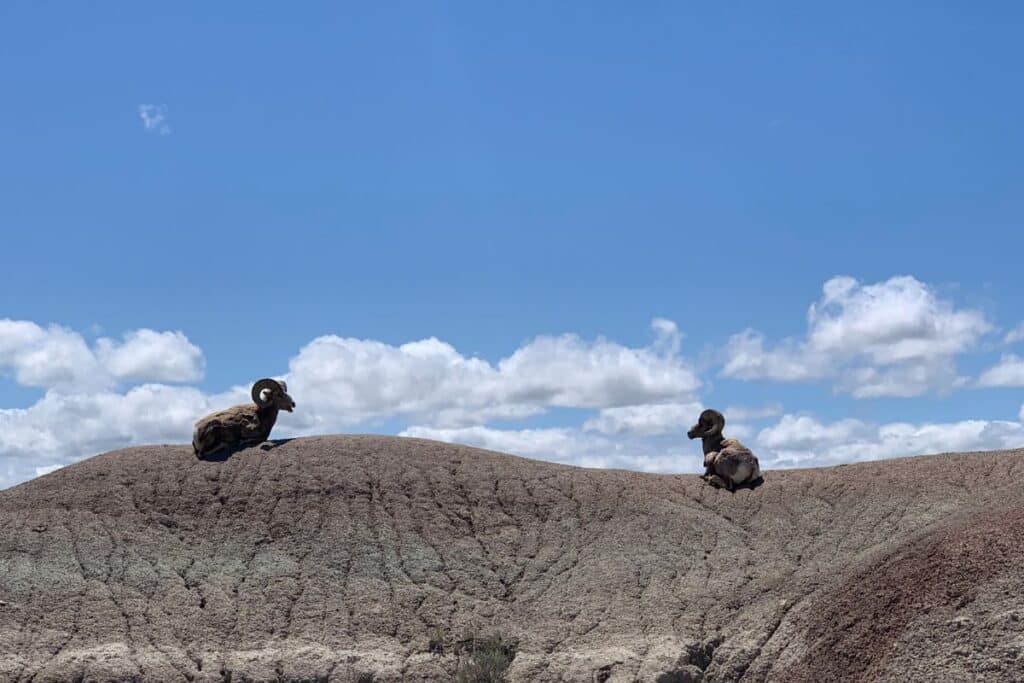
They prefer higher elevations with steep terrain, which provides them with protection from predators.
Prime locations to observe Bighorn Sheep in the park include the Titus Canyon area, the Panamint Mountains, and Telescope Peak.
American Badger
The American Badger is a solitary and powerful digger, primarily hunting rodents and other small mammals.
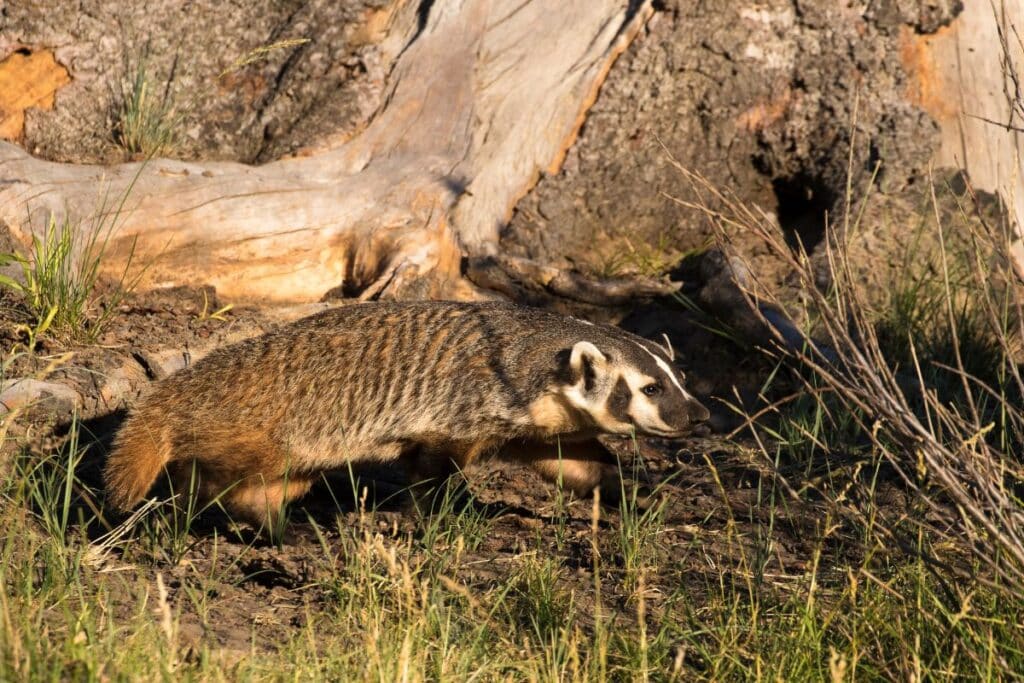
In Death Valley, badgers can be found in open areas with sandy or loose soil, such as the park’s alluvial fans and washes.
Although they are mainly nocturnal, you might spot one during the early morning or late afternoon hours.
Elf Owl
The Elf Owl is the smallest owl species in the world, measuring just 5 inches in length. These tiny nocturnal birds can be found in the park’s riparian areas, particularly around Mesquite trees.
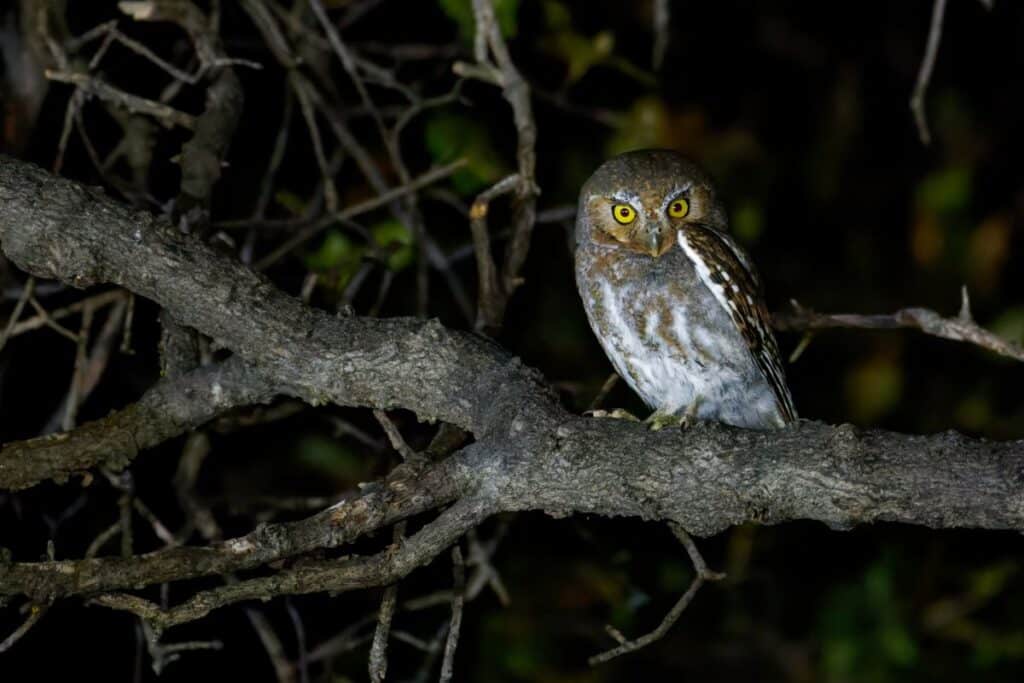
They are most active during the night, so your best chance of spotting one is by listening for their high-pitched calls or watching for their silhouette as they flit between trees.
Prime locations for Elf Owl sightings include Furnace Creek, Salt Creek, and the Oasis at Death Valley.
WIldlife Trails in the Death Valley National Park
Hiking in the Death Valley National Park is a great way to see some of the park’s most iconic wildlife. The trails are easy to follow and provide a scenic view of the surrounding landscape. From the large and majestic bighorn sheep to the diminutive desert kangaroo rat, there’s something for everyone to see.

Hiking trails include the Panamint Mountains Trail, the Badwater Road, the Telescope Hill Trail, the Devils Golf Course Trail, the Emigrant Trail, and the South Kaibab Trail.
While hiking always remember to carry proper gear and be aware of your surroundings, the trails in Death Valley National Park are well-maintained and provide a great opportunity to see some of the park’s most iconic wildlife.
Also Read: 9 Spectacular Hiking Trails In Death Valley National Park!
Carry a lot of water as the weather can be very hot and dry in the park. Wear sunscreen, hats, and sunglasses to protect your skin from the intense sun, and bring plenty of snacks and water to keep you going.
Surviving the Extreme: Adaptations of Death Valley Animals
Adaptations for water conservation
Water conservation is a crucial survival strategy for Death Valley animals, as the desert environment provides limited access to water sources. Many species have evolved specialized adaptations to conserve water and minimize their need for hydration. For instance, the Kangaroo Rat can survive without drinking water for its entire life.
Instead, it obtains moisture from the seeds it consumes and produces highly concentrated urine to reduce water loss. Similarly, the Desert Tortoise stores water in its bladder and can reabsorb it when needed, allowing the reptile to survive for up to a year without drinking.
Some plants in Death Valley, such as the Creosote Bush, have adapted to extract water from the air through their leaves. These plants provide a valuable water source for animals like the Black-tailed Jackrabbit, which nibble on the leaves to quench their thirst.
Many birds, including the Cactus Wren and the Phainopepla, have evolved to obtain all the water they need from their insect prey or from the fruits and berries they consume.
Nocturnal and crepuscular behaviors
To avoid the scorching daytime temperatures of Death Valley, many animals have adopted nocturnal or crepuscular lifestyles. These behaviors allow them to stay active during the cooler hours of the night or at dawn and dusk, reducing their risk of dehydration and overheating.
Nocturnal animals, such as the Kit Fox and Sidewinder Rattlesnake, hunt and forage at night when temperatures are significantly lower. They spend the hottest part of the day resting in burrows or under rocks and vegetation, which provides shade and insulation from the extreme heat. ‘
Crepuscular animals, like the Black-tailed Jackrabbit and the Desert Bighorn Sheep, are most active during the twilight hours of the day. This allows them to conserve energy and water while still taking advantage of the relatively cooler temperatures.
Burrowing and shelter-seeking habits
Burrowing and shelter-seeking habits are essential adaptations for many Death Valley animals, providing them with protection from the desert’s harsh conditions.
By retreating into burrows or finding shelter beneath vegetation, rocks, or other natural structures, animals can escape the extreme heat, maintain a stable body temperature, and conserve water.
For example, the Desert Tortoise spends the majority of its time in burrows that it digs in the ground.
These underground shelters help the tortoise maintain a stable body temperature and protect it from predators. Similarly, the American Badger is an expert digger, creating elaborate burrows to escape the heat and ambush its prey.
Smaller animals, like the Merriam’s Kangaroo Rat, construct extensive burrow systems to provide insulation and protection from temperature fluctuations and predators.
Unique dietary strategies
In the harsh environment of Death Valley, animals have evolved unique dietary strategies to maximize their chances of survival. Many species have adapted to feed on a wide range of food sources, allowing them to thrive even when resources are scarce.
For instance, the Coyote is an opportunistic omnivore, feeding on a varied diet that includes small mammals, birds, reptiles, insects, fruits, and carrion. This adaptability allows the Coyote to find food in a range of habitats throughout the park.
The Greater Roadrunner, known for its speed and agility, is a skilled hunter that preys on a variety of animals, such as insects, lizards, and small mammals. Its ability to switch between prey types helps the roadrunner survive in the challenging desert conditions.
Some Death Valley animals have developed specialized diets to take advantage of specific resources. The Phainopepla, a sleek, black bird, feeds exclusively on desert mistletoe berries, which are abundant in Death Valley.
The bird plays a crucial role in the mistletoe’s life cycle by dispersing its seeds through its droppings. Another example is the Chuckwalla, a large desert lizard that has adapted to a herbivorous diet. It primarily feeds on the leaves, flowers, and fruits of desert plants, which provide both nutrition and hydration.
This dietary specialization allows the Chuckwalla to thrive in an environment where other animals might struggle to find sufficient food.
Insects in Death Valley also display unique dietary strategies. For example, the Darkling Beetle has evolved to consume a variety of organic materials, including plant matter, fungi, and even the remains of other insects. Its versatile diet allows it to survive in an ecosystem where resources can be scarce and unpredictable.
These unique dietary strategies, along with other adaptations like water conservation, nocturnal and crepuscular behaviors, and burrowing and shelter-seeking habits, enable Death Valley animals to survive and even thrive in one of the most challenging environments on Earth.
Tips for Spotting Death Valley Animals on Your Hike
Best times of day for wildlife viewing
To maximize your chances of spotting Death Valley animals during your hike, consider the best times of day for wildlife viewing. Many desert species are nocturnal or crepuscular, so the early morning and late afternoon hours are prime times for animal activity.
These cooler hours provide a more comfortable environment for animals to forage, hunt, and move about.
Additionally, visiting water sources such as springs, creeks, or seeps during these times can increase your likelihood of encountering animals as they come to drink or feed on nearby vegetation. Remember to be patient and observant, as many desert animals are well-camouflaged and may not be immediately visible.
Top hiking trails for wildlife encounters
When exploring Death Valley National Park, some hiking trails offer better opportunities for wildlife encounters than others. Here are a few top trails to consider:
Salt Creek Interpretive Trail: This easy, boardwalk trail winds through a rare desert oasis, where you can spot pupfish, migratory birds, and other wildlife attracted to the water source.
Mesquite Flat Sand Dunes: Wander among the dunes at dawn or dusk for a chance to see sidewinder rattlesnakes, jackrabbits, and various bird species.
Darwin Falls Trail: This short hike leads to a lush, year-round waterfall, providing a unique habitat for birds, amphibians, and small mammals.
Golden Canyon Trail: This popular hike traverses a colorful, narrow canyon, where you might spot bighorn sheep on the surrounding cliffs and slopes.
Safety tips for observing wildlife
While observing Death Valley animals can be an exciting and memorable experience, it’s crucial to prioritize safety for both you and the animals. Keep these safety tips in mind:
Maintain a safe distance: Give animals plenty of space and never approach or attempt to touch them. Use binoculars or a telephoto lens for a closer view.
Stay on designated trails: Straying from trails can damage fragile desert habitats and increase your risk of encountering dangerous wildlife, like venomous snakes.
Carry water and wear appropriate clothing: The desert environment can be harsh, so stay hydrated and protect yourself from the sun and heat.
Be aware of your surroundings: Watch your step and keep an eye out for potential hazards, such as snakes or unstable terrain.
Responsible wildlife photography practices
Capturing images of Death Valley animals can be an exciting way to document your hiking experience, but it’s essential to practice responsible wildlife photography. Here are some guidelines to follow:
Respect animals’ space: Maintain a safe distance and avoid disturbing their natural behavior. Use a telephoto lens to capture close-up shots without getting too close.
Be patient and observe: Take the time to watch animals and learn their patterns, which can lead to more natural and engaging photos.
Follow park rules and regulations: Always adhere to posted signs, stay on designated trails, and follow any guidelines provided by park staff.
Share responsibly: When sharing your wildlife photos online, avoid disclosing specific locations of sensitive species or nesting sites, as this information could be used to harass or harm the animals.
Guided tours and wildlife programs
Another excellent way to increase your chances of spotting Death Valley animals is by participating in guided tours or wildlife programs offered by the park.
Park rangers and naturalists have in-depth knowledge of the area and its wildlife, which can greatly enhance your wildlife viewing experience. Ranger-led programs may include guided hikes, wildlife talks, and evening programs that focus on the park’s nocturnal animals.
Check the Death Valley National Park’s website or visitor center for information on available programs and schedules. Additionally, some private tour companies may offer wildlife-specific excursions led by experienced guides.
These tours often provide a more personalized experience and may grant you access to less-traveled areas where wildlife sightings are more likely.
Using appropriate gear for wildlife spotting
Having the right gear can greatly improve your chances of spotting wildlife in Death Valley. Invest in a good pair of binoculars or a spotting scope to help you see animals from a distance without disturbing them.
A field guide or a wildlife identification app can also be useful for learning about the different species you might encounter and understanding their habits and preferred habitats.
Wearing appropriate clothing in neutral or earth-toned colors can help you blend into the environment and avoid startling animals.
Additionally, consider bringing a lightweight, foldable camping chair for comfortable wildlife watching, especially during the early morning and late afternoon hours when animals are most active.
The importance of quiet observation
One often overlooked aspect of successful wildlife spotting is the practice of quiet observation.
Many desert animals are timid and sensitive to noise, so minimizing your sound footprint can increase your chances of witnessing their natural behavior. When hiking or setting up for wildlife watching, move slowly and deliberately, avoiding sudden movements or loud noises.
Turn off electronic devices, or at least set them to silent mode, to prevent unexpected sounds that could disturb the animals. If you’re hiking with a group, try to keep conversations quiet and to a minimum, and take breaks to simply listen to the sounds of nature.
By practicing quiet observation, you’ll not only improve your chances of spotting Death Valley animals but also deepen your connection with the natural world around you.
How to stay safe while hiking in the park
There are a few things to keep in mind when hiking in the park to ensure your safety.
First, be aware of your surroundings and know where you are at all times. It is easy to get turned around in the vastness of the park, so always keep track of your location.
Second, carry plenty of water with you and drink often to stay hydrated. The heat in the park can be intense, and dehydration can set in quickly.
Third, be cautious of wildlife. While most animals in the park are harmless, there are some that can pose a threat. Pay attention to signs and never approach or feed any animal.
Finally, hike with a buddy whenever possible and let someone know your itinerary before heading out. By following these simple guidelines, you can ensure a safe and enjoyable experience while hiking in Death Valley National Park.
Frequently Asked Questions About Death Valley National Park and Its Animals
What is the most common animal found in Death Valley National Park?
Some of the most common animals in the park include the Black-Tailed Jackrabbit, the Desert Cottontail, and the Coyote. These species are well-adapted to the desert environment and can be found throughout the park. Their adaptations, such as long ears for heat dissipation and a varied diet, help them survive in the harsh conditions.
Are there any endangered species in the park?
Yes, the park is home to several endangered species, such as the Devil’s Hole Pupfish, which is found only in a single spring within the park. This tiny fish has adapted to the extreme conditions of its isolated habitat, making it uniquely vulnerable to changes in water quality and temperature.
Can I bring my dog to Death Valley National Park?
Dogs are allowed in the park but must be kept on a leash no longer than 6 feet at all times. They are not allowed on trails, in the backcountry, or in park buildings. This is to protect the park’s fragile ecosystem, ensure the safety of your pet, and prevent conflicts with native wildlife.
What types of birds can be found in the park?
Death Valley National Park is home to over 300 species of birds, including the Greater Roadrunner, Cactus Wren, and Red-Tailed Hawk. Birdwatchers can enjoy spotting migratory birds during the cooler months, while year-round residents can be seen throughout the park. The diverse bird species are attracted by the varied habitats within the park, from desert to mountain.
Are there any venomous snakes in Death Valley?
Yes, the park is home to several venomous snake species, such as the Sidewinder Rattlesnake and the Mojave Desert Sidewinder. While these snakes are dangerous, they are also an essential part of the ecosystem and help control rodent populations. Visitors should always be cautious and give snakes a wide berth to avoid encounters.
How do the animals in Death Valley National Park survive the extreme heat?
Animals in Death Valley have adapted to survive the extreme heat by using various strategies such as being nocturnal, seeking shade, or burrowing during the day. Some animals, like the Desert Tortoise, can conserve water by excreting waste as a dry, powdery substance rather than liquid urine.
Are there any guided wildlife tours available in Death Valley National Park?
While the park itself does not offer specific wildlife tours, ranger-led programs often touch on the park’s wildlife, and some private tour companies may offer wildlife-focused excursions. Check the park’s website or contact the visitor center for more information on ranger-led programs and local tour operators.
Handpicked Guided Tours in Death Valley National Park
What should I do if I encounter an aggressive or dangerous animal in Death Valley National Park?
In the event of encountering an aggressive or dangerous animal, maintain a safe distance, and do not approach or provoke the animal.
If possible, slowly back away while keeping an eye on the animal. If the animal continues to approach,make yourself appear larger by raising your arms and standing tall. Speak loudly and firmly, but do not scream or make sudden movements.
If the animal does not retreat, throw objects like rocks or sticks in its direction (not directly at it) to deter it. In the case of an imminent attack, protect your head and neck with your arms and try to remain standing. Always report any dangerous wildlife encounters to park staff or rangers.
What precautions should I take to minimize my impact on Death Valley National Park’s wildlife and ecosystem?
To minimize your impact on the park’s wildlife and ecosystem, follow Leave No Trace principles, including disposing of waste properly, staying on designated trails, and not disturbing plants or animals. Keep a safe distance from wildlife, and do not feed them, as this can lead to negative consequences for both the animals and other visitors. Finally, respect park regulations and guidelines to ensure the continued protection of the park’s fragile ecosystem.
Location, How to Reach, and Best Time to Visit
Death Valley National Park is located in eastern California, near the Nevada border. It covers an area of approximately 3.4 million acres, making it the largest national park in the contiguous United States.
To reach the park, you can fly into Las Vegas or Los Angeles and rent a car for the drive. The most popular entrance is via Highway 190, which runs through the park from east to west.
The best time to visit Death Valley National Park is during the cooler months of October through April, when daytime temperatures are more tolerable and many of the park’s animals are more active.
During this time, visitors can enjoy hiking, camping, and wildlife viewing, among other activities. Summer months can be dangerously hot, with daytime temperatures regularly exceeding 120°F (49°C), so extra precautions should be taken if visiting during this time.
NPS Guide to Death Valley Animals
To better understand and appreciate the wildlife of Death Valley, we recommend referring to the National Park Service’s guide to animals in the park. This resource provides in-depth information on the various species that call Death Valley home, as well as tips on how to observe these animals responsibly and safely.
Conclusion
What a rewarding experience it was to explore the wildlife of Death Valley National Park. We were lucky enough to spot fifteen different animals during our hike, and we will definitely be returning again soon!
While not all national parks have such an abundance of wildlife, this park is surely one that stands out from the crowd. If you’re looking for a unique outdoor adventure, then consider visiting this amazing place and getting up close with some of nature’s most remarkable creatures!

